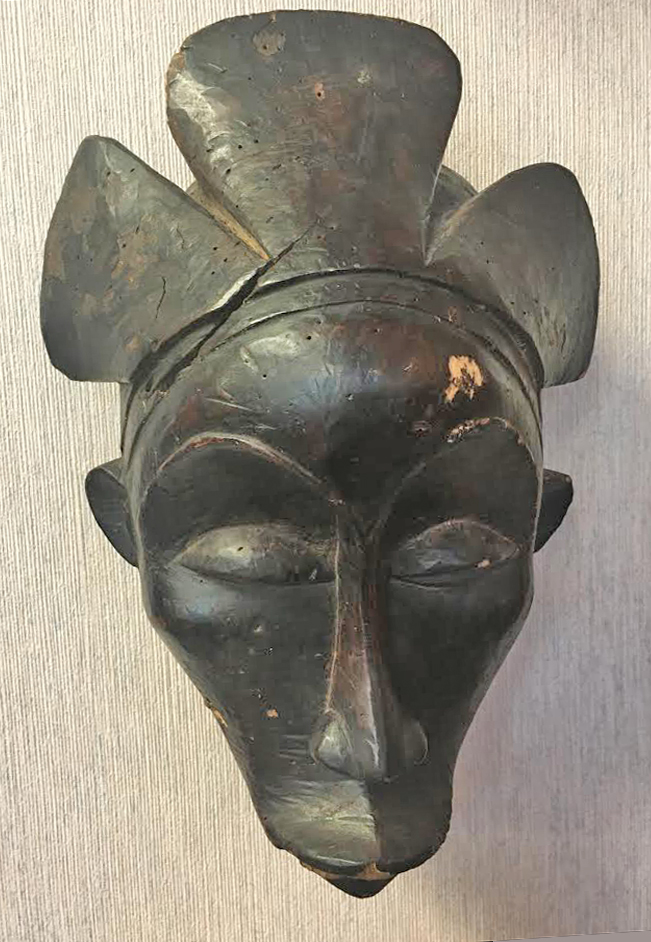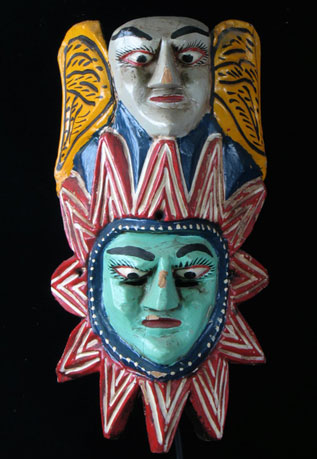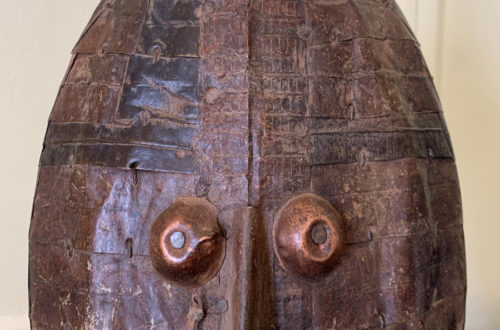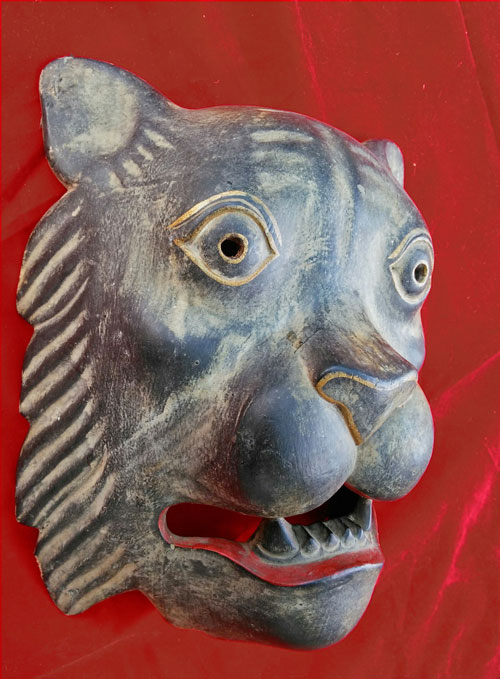 Q: I would like to have your views on the origins of this mask, which I bought for about $40 at an antique dealer in Montreal who was not used to dealing with African masks. As you can see, it is damaged and it seems rather old, and has has a very strong presence. The shape of the face somehow reminds me of some Pende masks I have seen, but this one remains mysterious. Jean-Francois, 1760
Q: I would like to have your views on the origins of this mask, which I bought for about $40 at an antique dealer in Montreal who was not used to dealing with African masks. As you can see, it is damaged and it seems rather old, and has has a very strong presence. The shape of the face somehow reminds me of some Pende masks I have seen, but this one remains mysterious. Jean-Francois, 1760
A: Despite the wear and damage, this beautifully carving does indeed make a strong presence. Unfortunately, I cannot identify the character it represents or tribal group from which it comes (along the Kwilu River in the western Democratic Republic of Congo). The mask’s quality, probable authenticity, and rarity make it very desirable. Please do more research!
The Pende people are divided into two distinct cultural groups: the Western Pende and the Eastern Pende However, both groups see themselves as part of the same ethnic group. There is no centralized political authority and Pende society is organised around extended family groups rather than through chiefly authority.
Much like the Yaka and Suku peoples, the Pende originally lived in the strip between the Atlantic Ocean and the Cuanza River, in modern-day Angola. They migrated to their current region of the modern-day Democratic Republic of the Congo in around 1620 as a consequence of the expansion of the Kingdom of Lunda. In around 1885, the powerful Chokwe ethnic group began expanding and gained control over the Eastern Pende but this period was brought to an end by the arrival of European colonists. Source Wikipedia. A 







One Comment
BR
This is a mask made for sale in the style of the Buli Master of the Luba people. Not very old and artificially aged. Cheers.